Review: Caudron C.600 Aiglon 1:72 SBS Model – first look
Oops, they did it again!
As may everybody knows in the scale modeling world (or at least on this site) the Moson Model Show just finished last weekend. Beside the extraordinary exhibition, competition and exchange (model market) this is the perfect place to meet modeler friends from around the world and grab some rare stuffs also. I'm fortunate enough to name the SBS Model company members as friends of mine (great girls and guys) and at their stand (where they announced their hot new Macchi M.C.72) I can took my hand on their Caudron C 600 Aiglon kit (and some botlles of Duvel they generously shared with me). After the second beer Mr. Csaba Bordacs asked me if I wanted to write a review about the Caudron here on Imodeler (for more beer to come) . How could I refuse such an opportunity? So I said yes and now the kit is on my desk (with some progress already to be honest).
Those how aren't familiar with this elegant little sporting plane (according to aviastar.org): "The Caudron C.600 Aiglon (Eaglet) light touring monoplane was the work of the outstanding French aircraft designer of the 1930s, Marcel Riffard. He had taken over the design department of the newly amalgamated Caudron and Renault combine at the end of 1933. The first of two prototypes made its maiden flight at Issy-les-Moulineaux in March 1935. A low-wing cantilever monoplane with tandem open cockpits, it had the excellent aerodynamic qualities that became associated with all Riffard designs. The Aiglon proved itself with a number of outstanding flights. Andre Japy flew a single-seat C.610 version from Paris to Saigon between 12 and 16 December 1935 at an average speed of 128km/h. The type was especially popular with French women fliers: Mesdames Dupeyron and Lion flew an Aiglon to establish new women's straight-line distance records in 1937 and 1938, while Suzanne Kohn flew her Aiglon from France to Madagascar in 1939. … Total production of the Aiglon was 203, some being fitted with continuous glazed canopies over the cockpits. The type was particularly popular with French private owners and flying clubs. A number were sold abroad, 14 being exported to Spain, two to Argentina and one to Japan. With the outbreak of war in 1939 many Aiglons were requisitioned by the French government and used as liaison aircraft by the Armee de I'Air. Some 178 of the basic C.600 Aiglon were completed, each powered by a 75kW Renault 4Pgi Bengali Junior."
Back to the kit: If You are familiar in the world of limited edition resin kits You know that one can find little gems as easy as horrible blob of resin junks among them. The very rapsodic nature of the quality of small scale produced resin kits (beside the tricks to work with this kind of material) is the main reason that these products long time considered as the territory of enthusiasts or hard core builders.
Lot of things has changed here recently and SBS – IMHO – is one of the most innovative company in this field. They use the latest technology to make their kits, 3D modeling and printing at the highest level. These kits are far cry from handmade masters related small scale products (as a cottage manufacturer I really feel the difference) and really close to an ordinary mass produced injection moulded plastic kit. Naturally the material and the moulding process has some limitations but after You remove the moulding blocks You can hardly say the difference. There are locator pins on the fuselage (and on the wings also - more about them later) quite uncommon feature on a resin (or even a short-run) kit.
As You can see on the pictures this is a relatively simple kit which is a good thing considering it's multi-media nature so the assembly shoudn't cause any problem even for those who are inexperienced with resin subjects. The interior details are exceptional the only drawback here (if it can be mentioned as drawback) is that the parts are really small and You have to be very careful not to loose any small parts (and You will need tweezers and magnifiers when assemble I suppose).
The parts are perfecty molded and the grey coloured material they use is easy to work with. The surfaces are smooth and perfect in any respect - the plane hasn't got too much panel line but they are sharp and thin. The doped elevator and rudder surfaces are look great aswell. Which I saw earlier on their Comet kit is true in this case too: the fit is too good (or too tight as You like). No, please don't laugh! This is simply part of the 3D technology. I have some experience with designer softwares and this is really hard to achieve perfect toleraces. Not a big deal but You have to be aware the fact that in some cases You have to sand and make test fits but this is advisable when You work on a resin kit anyway.
The mould blocks on the other hand aren't on the best possible locations - OK I see that this was the best not to loose any details but they are constantly on the joining surfaces and hard to remove without ruin the locator pins. I can manage it however on the fuselage sides and as You see the two half are clipped together nicely. What I have to mention when we speak about fit that is the fuselage-wing joint. There are big locator pins on the wings and their negative counterparts are in the fuselage but in case of the left wing they are simply misaligned. I don't know what happened here but it seems like some design error. As the moulding block are also on these surfaces You are going to do better if cut down them and sand the surface smooth anyway (and strenghten the joints with some wire instead). This was the only noticeable inperfection on the kit I can speak about and it can be corrected easily.
I think the time has come when these "new age" resin kits are viable alternatives to short run even minstream kits - minus their price - and well within the abilities of an average modeler - just buy some extra thin CA. SBS was prescient enough to release not just civilian but interesting miltary versions - Spanish civil war or WW2 even Hungarian versions to name a few - so anybody who likes this sleek sportplane can choose one according to her/his taste. If You like rare subjects or a bit tired of the too much BF-109/Spitfire stuff this kit worth the consideration. Now I'm eagerly waiting for their Macchi-Castoldi MC.72 to arrive! I would definitely recommend it to anyone who just want to try resin kit building.
When I built the SBS DH.88 Comet kit back then I said that kit was so close to perfection that our (already high) expectations to SBS kits raised again, so I wondered how good their next kit could be. As I see I didn't need to worry: they did it again.

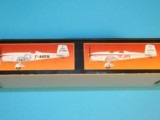
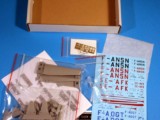







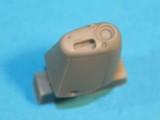



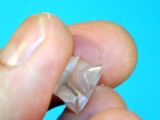






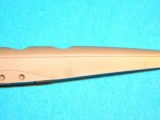
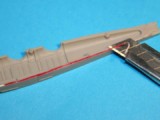







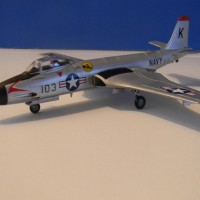
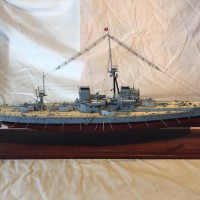
My hat's off to you guys that do resin kits...it's all I can do to assemble injected kits (and I haven't done much of THAT lately, either).
Thanks Craig. Beleive me, these new resin kits are nearly as good as an injected kit - the only difference is You have to use CA glue. My real heros are whose building vacform kits 🙂
Gabor, this is such an interesting airplane & kit! I don't have the skills to tackle this much resin at once, but when finished, you'll have a beautiful plane! Well done to you & your friends at SBS.
Bravo!
I forgot to mention, but your history & write-up are second to none!
Thank You very much Jeffry! In reality this kit is real easy to work with - definitely better than some mainstream kit on the market.
Superb detailing. Got to love this kit. ?
The details are incredible on this kit indeed - nearly too much as the small parts are really delicate and when I say "small parts" I mean that 😀
It will, as usual, become a masterpiece in your hands!
Thank You Greg! You are too kind 🙂
Nice review, Gabor, thanks very much.
Just ran across this thread. I finished this little guy a few weeks. Excellent little kit and very quick build.
1 attached image. Click to enlarge.